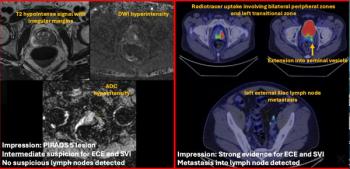
Fewer Immediate Allergic Reactions to Nonionic Linear GBCA Gadodiamide
A comparison of gadolinium-based contrast agents shows the nonionic linear GBCA gadodiamide had the lowest allergic reaction rate.
Nonionic linear GBCA gadodiamide had the lowest rate of immediate allergic adverse events compared to ionic linear or nonionic macrocyclic gadolinium-based contrast agents (GBCAs), according to a study published in the journal
Researchers from Weill Cornell Medical Center in New York, N.Y., performed a systematic review and meta-analysis to determine if there are differences in rates of immediate allergic events between classes of GBCAs.
Using PubMed and Google Scholar databases, the researchers searched for studies in which rates of immediate adverse events to GBCAs were reported. They used the American College of Radiology classification system to characterize allergic-like events as mild, moderate or severe, and the total number of administrations of each GBCA was recorded.
The researchers found nine studies in which immediate reactions to GBCA were recorded from a total of 716,978 administrations of GBCA met the criteria for inclusion and exclusion. The overall rate of GBCA allergic-like events was 9.2 per 10,000 administrations and the severe rate was 0.52 per 10,000 administrations. Eighty-one percent (539 of 662) were mild reactions, 13 percent (86 of 662) were moderate reactions, and 6 percent (37 of 662) were severe reactions.
Gadodiamide, a nonionic linear chelate, had only 1.5 reactions per 10,000, the lowest rate of reactions and significantly fewer than linear ionic GBCAs at 8.3 per 10 000 administrations. This was also less than that for nonionic macrocyclic GBCAs at 16 per 10,000 administrations. GBCAs known to be associated with protein binding had a higher rate of reactions, at 17 per 10,000 administrations compared with the same chelate classification without protein binding, at 5.2 per 10,000 administrations.
The researchers concluded the lowest rate of immediate allergic adverse events occurred with use of the nonionic linear GBCA gadodiamide in comparison with those of ionic linear or nonionic macrocyclic GBCAs. A higher rate of immediate allergic adverse events was associated with ionicity, protein binding, and macrocyclic structure.
Newsletter
Stay at the forefront of radiology with the Diagnostic Imaging newsletter, delivering the latest news, clinical insights, and imaging advancements for today’s radiologists.




























